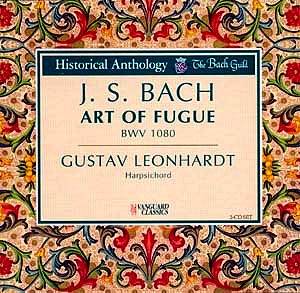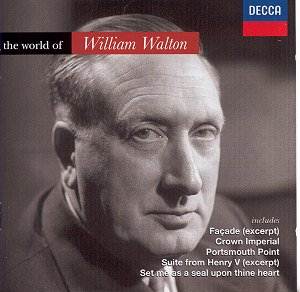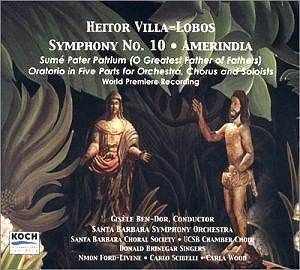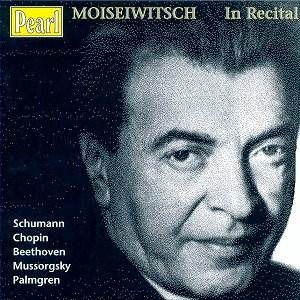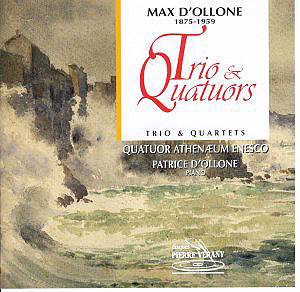 Composer: Max d’Ollone
Composer: Max d’Ollone
Works: Piano Quartet (1949), String Quartet (1898), Piano Trio (1920)
Performers: Patrice d’Ollone (piano), Quatuor Athenaeum
Recording: Live recital, Salle des fêtes de l’Académie de Paris, January 1999
Label: Pierre Verany, PV799061
Max d’Ollone, a composer whose significant contributions have been overshadowed in the annals of French music, emerges with compelling clarity in this recording featuring three chamber works that span his career. The Piano Quartet (1949), String Quartet (1898), and Piano Trio (1920) represent a unique trajectory through the late Romantic era, marked by d’Ollone’s classical training under the auspices of Gabriel Fauré and Jules Massenet. This disc not only reintroduces d’Ollone’s music to contemporary audiences but does so with a level of artistry that enhances the inherent qualities of these significant compositions.
The performance by Quatuor Athenaeum and pianist Patrice d’Ollone, the composer’s grandson, is characterized by a remarkable synergy that brings forth the intricate textures of d’Ollone’s writing. The Piano Trio, notable for its cyclic form, showcases a deft balance between thematic development and expressive lyricism. The first two movements unfold with a serene ease, leading into a Scherzo that erupts with rhythmic vigor before culminating in a spirited finale. The performers navigate the complex interplay of voices with precision, allowing the cyclical themes to emerge organically while maintaining a robust forward momentum.
The engineering of the recording is commendable, capturing the subtle nuances of both the piano and strings with clarity and warmth. The acoustic of the venue enhances the natural resonance of d’Ollone’s music, particularly in the String Quartet, which exudes a vibrant charm reflective of its composition during the composer’s time in Rome. The string players exhibit a nuanced understanding of the Romantic idiom, particularly in the emotive passages that echo the influences of Massenet and Saint-Saëns, yet d’Ollone’s voice remains distinct. The richness of the sonority in the Piano Quartet is particularly striking, where the muscular dotted rhythms of the finale are executed with both power and finesse, standing as a testament to d’Ollone’s originality within the “Brahmsian” tradition.
While d’Ollone’s works may not weave the impressionistic textures of his contemporaries like Debussy or Ravel, the chromaticism and harmonic explorations offer a fresh perspective on late Romanticism. There is a palpable freshness to his melodic inventiveness, defying easy categorization and inviting listeners to engage with the music on its own terms. This recording serves as an essential excavation of d’Ollone’s legacy, revealing a composer whose works deserve a more prominent place in the chamber music repertoire.
This collection not only illustrates d’Ollone’s evolution as a composer but also showcases the remarkable interpretative depth and technical prowess of the performers. The thoughtful execution and passion evident in this recording affirm the viability of d’Ollone’s music, urging listeners and performers alike to revisit the works of this largely forgotten yet profoundly engaging composer. The disc is a resounding success, and one hopes it spurs further exploration of d’Ollone’s extensive oeuvre.
